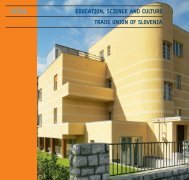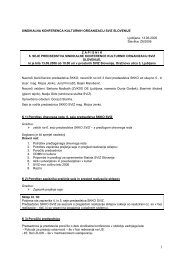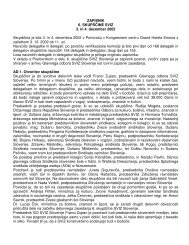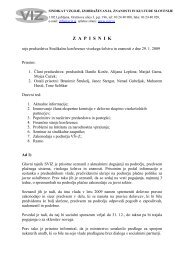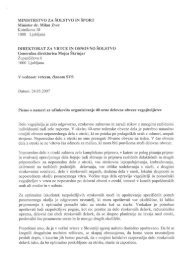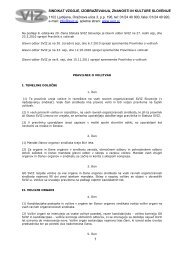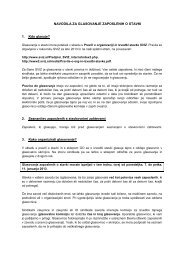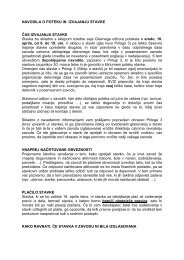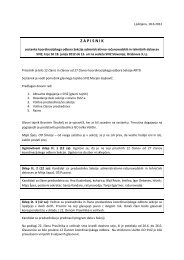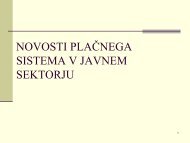Create successful ePaper yourself
Turn your PDF publications into a flip-book with our unique Google optimized e-Paper software.
in fact, derived from his travels in America, during which he was enthused by<br />
the beauty of the natural reserves Bryce Canyon and Cedar Breaks. Witten<br />
for solo horn, the sixth movement demonstrates a strictly symmetrical form,<br />
as it is constructed from an introduction, a refrain, a central development,<br />
a repetition of the refrain and a coda, which is conceived as a crab canon of<br />
the introduction. We can understand the latter as a kind of demonstration<br />
of various performance possibilities offered by this brass instrument: we can<br />
hear flutter tonguing, trills, microtonal oscillations and glissandi. In contrast to<br />
this are the two refrains, in which the composer treats the horn as a typically<br />
‘romantic’ signal instrument. It is precisely in this combining of the contemporary<br />
and the traditional that we discover the main trait of Messiaen’s late<br />
opus, which is marked by a synthesis of all of the composer’s compositional<br />
searching, as evident in the superposition of rhythms, taken from Indian music,<br />
the use of modes of limited transposition and the exploitation of the melodic<br />
wealth of bird calls (throughout the work we hear the tonal arabesques of<br />
birds that live in the Bryce Canyon and on the Hawaiian islands).<br />
PROGRAM / PROGRAM<br />
In the autumn of 1773, the seventeen-year-old Mozart returned from a nine-week<br />
stint in Vienna and immediately began to compose a series of five<br />
symphonies. The second of them is the so-called ‘Little’ Symphony in G Minor,<br />
the first of the composer’s symphonies in a Minor key. The work is characterised<br />
by a dark, frightening tone, but its ‘more serious’ tone cannot be linked<br />
with some kind of personal crisis of the composer. It is much more likely that in<br />
Vienna the young Mozart heard the ‘sturm und drang’ symphonies of Joseph<br />
Haydn, amongst them most certainly the masterful Symphony No. 39, which,<br />
just like Mozart’s symphony, is composed in G Minor and has four horns. In<br />
fact, Mozart’s Symphony No. 25 represents significant progress relative to his<br />
youthful works: the thematic relationships between the movements become<br />
more thought out, the musical style is denser, three movements are written in<br />
sonata form, the development becomes more extensive, and the symphony<br />
is cyclically connected. The symphony demonstrates a certain shift from the<br />
gallant music making that was predominant at the time, being marked by<br />
syncopated rhythms, relentless repetition of tones, dramatic unisons and<br />
chromatic stringency.<br />
Even the first movement is full of falling and rising syncopations, with the<br />
intensity being carried forward to the second theme of this sonata movement.<br />
The melancholy atmosphere also flows into the second movement, in which<br />
the bassoon stands out from the muted strings with its characteristic sighing<br />
motive. The minuet is also darkly coloured, with the only light being provided<br />
by the short trio, scored for wind alone. The finale commences immediately<br />
with a unison, before a return of the syncopations that marked first movement,<br />
providing the work with a meaningful rounded conclusion.<br />
132<br />
Gregor Pompe<br />
Prevod / Translation: Neville Hall



